The number of children taking powerful antipsychotic drugs has nearly tripled over the last 10 to 15 years, according to recent research. The increase comes not because of an epidemic of schizophrenia or other forms of serious mental illness in children, but because doctors are increasingly prescribing the drugs to treat behavior problems, a use not approved by the Food and Drug Administration (FDA). And a disproportionate number of those prescriptions are written for poor and minority children, some as young as age 2.
Doctors are prescribing antipsychotics even though there's minimal evidence that the drugs help kids for approved uses, much less the unapproved ones, such as behavioral problems. And to make matters worse, the little research there is suggests the drugs can cause troubling side effects, including weight gain, high cholesterol, and an increased risk of type-2 diabetes.
Doctors can legally - and commonly do - write prescriptions for any medication they see fit to treat a condition. (See here for more details on off-label prescribing)
But overuse of antipsychotic drugs has become worrisome enough that the American Psychiatric Association recently announced that doctors should not routinely prescribe the drugs as first-line treatment to children and adolescents for any reason other than psychotic disorders such as schizophrenia or severe tic disorders. The association is so concerned that it chose to include this issue as part of Choosing Wisely, an initiative in which Consumer Reports has jointed the ABIM Foundation and national medical societies to identify tests and treatments to question.
Antipsychotic drugs do have a place in psychiatric treatment, even in children and teens. They can help manage disabling symptoms caused by severe mental illness or developmental disorders. But for many kids taking the drugs, the benefits probably don't outweigh the risks.
"What's not known about the long-term effects is very troubling," Christopher Bellonci, M.D., assistant professor at Tufts University School of Medicine in Boston, said. "The younger you go, the more you can affect the developing brain."
So, what's behind the antipsychotic boom? Our investigation, based on an analysis by the American Society of Health-System Pharmacists, uncovered several factors, including overly aggressive drug marketing and a lack of access to quality mental health care. Caught in the middle are families who often have insufficient resources to deal with complex emotional, psychological, and behavioral problems.
"There's a societal trend to look for the quick fix, the magic bullet that will correct disruptive behaviors," David Rubin, M.D., associate professor of pediatrics at the Perelman School of Medicine at the University of Pennsylvania in Philadelphia, said. "But for those looking for a quick solution to escalating behaviors at home, the hard truth is there is unlikely to be a quick fix."
The rise of antipsychotic drug use
Certain antipsychotic drugs have been approved by the FDA to treat schizophrenia and bipolar disorder in adolescents and teens, as well as extreme irritability in children 5 and older with autism who could be a danger to themselves and others. (See the table below for a summary).
But the majority of kids prescribed antipsychotic drugs don't take them for one of those reasons. Schizophrenia is rarely diagnosed until adulthood, for example. Bipolar disorder is estimated to affect less than 3 percent of teens, according to the National Institute of Mental Health, but the exact prevalence is unknown because of its difficulty to diagnose in children. That's partly because the symptoms are less clear and may overlap with other conditions such as ADHD. And while about one in 110 children have some form of autistic disorder, only about 30 percent are affected by the aggressive impulse behavior antipsychotic drugs have been approved to treat.
Table 1. Antipsychotic Medications and Their Approved Uses
Brand Name (generic name) FDA-approved uses for children
- Abilify (aripiprazole): Approved for use by adolescents with schizophrenia, adolescents with bipolar disorder mixed or manic episodes, and irritability associated with autism.
- Clozaril, Fazaclo (clozapine): None
- Saphris (asenapine): None
- Fanap (iloperidone): None
- Zyprexa, Zyprexa Zydis(olanzapine): Approved for use by adolescents with schizophrenia, and adolescents with bipolar disorder mixed or manic episodes.
- Invega (paliperidone): None
- Seroquel, Seroquel XR (quetiapine): Approved for use in treatment of children with manic episodes in bipolar disorder, and adolescents with schizophrenia.
- Risperdal (risperidone): Approved for use by adolescents with schizophrenia, adolescents with bipolar disorder mixed or manic episodes, and for irritability associated with autism.
- Geodon (ziprasidone): None
Those disorders affect a much larger pool of children. About 10 percent of kids aged 3 to 17 are affected by either behavior problems or ADHD.
Increasingly, kids are prescribed antipsychotic medications at their pediatrician's office, rather than by a psychiatrist. The number of prescriptions for the drugs written by pediatricians has increased steadily over the last several years and is up nearly 25 percent since 2006.
"What started out as a treatment with some level of evidence for a small sub-group of youth with significant development disabilities, for example, has been extended to cognitively normal kids without any strong evidence," Rubin said.
Two studies provide a window on just how much things have changed. In the first, researchers looked at prescribing practices from 2005 to 2009 and those of a decade earlier. Results, published online Aug. 6, 2012, by the Archives of General Psychiatry showed that antipsychotic use increased about 85 percent in children and adolescents - at a much higher rate than in adults - and that the drugs are now used very differently in younger patients. For example, in adults, doctors prescribe antipsychotic drugs mostly for bipolar disorder, depression, or schizophrenia and more often to women; in children and adolescents, the drugs are most commonly prescribed to treat disruptive behavior disorder in boys.
Another analysis found that antipsychotic prescriptions for children age 2 to 5 doubled between 2001 and 2007. Most of the children were 4- and 5-year-old boys, with ADHD and disruptive behavior disorder among the most frequent diagnoses.
Comment: Additional articles on Big Pharma's Crooked Crusade to Push Pills on Little Kids:
The Psychiatric Drugging of Infants and Toddlers: An American Phenomenon
Number of 0-5 year olds on psychotropic drugs skyrockets 42% since 2009
Turning classrooms into labs: ADHD diagnosis and the drugging of kids
Behind the trend
Use of all psychiatric drugs has increased in children, not just antipsychotic drugs. One reason is a growing awareness of mental health problems in kids and an honest desire to treat them. But the system is not always set up to provide the best care.
For one thing, an approach that combines nondrug measures such as parent training and cognitive behavior therapy with medication if necessary may work best. But many kids taking antipsychotic drugs have never seen a mental health professional. "Use is really high among kids in the Medicaid system where decent non-drug services may be difficult to find," says Rubin, who also points out that even kids with private insurance often don't have coverage for psychiatric care or counseling.
And it doesn't help that drug companies might overhype the benefits of the drugs while playing down the risks.
Comment: Examples of BIG PHARMA (drug companies) manipulatingthe masses:
4 Creepy Ways Big Pharma Peddles its Drugs
15 Dangerous Drugs Big Pharma Shoves Down Our Throats
How the mental health industry creates disease, works with Big Pharma
Psychopathy in Action: Psychiatric Researchers Fail to Reveal Big Pharma Payoffs
Antipsychotics have become huge moneymakers for the drug industry. In 2003, annual U.S. sales of the drugs were estimated at $2.8 billion; by 2011, that number had risen to $18.2 billion. That huge growth was driven in part by one company - Janssen Pharmaceuticals - and its aggressive promotion of off-label uses in children and elderly patients, relying on marketing tactics that according to the federal government, crossed legal and ethical lines.
In November, Janssen Pharmaceuticals and two other subsidiaries of the behemoth drug manufacturer Johnson & Johnson agreed to pay more than $2.2 billion to settle criminal and civil claims stemming from deceptive marketing of the antipsychotics risperidone (Risperdal) and other products. According to claims made by the U.S. Department of Justice, the companies marketed two antipsychotics for uses that were never proved safe and effective using tactics that allegedly included downplaying serious risks and paying kickbacks to physicians and pharmacies for prescribing and promoting the drugs.
Important questions
There's been little official research into the use of antipsychotic drugs in kids, particularly off-label uses of the drugs. But, in effect, widespread off-label use of the drugs means that many kids are involved in a sort of large, poorly controlled experiment. That has left a lot of questions, even some basic ones, unanswered:
Do they help? Even for approved uses, the evidence is limited to a few short-term studies; it's still unclear how well the drugs work and whether they remain effective over the long-term. All total, studies of the drugs have involved fewer than 3,000 children, most followed for eight weeks or less.
Are they safe? Newer antipsychotic drugs are turning out to carry more risk than initially thought. "The atypical versions were thought to be safer (than older antipsychotic drugs), but we are seeing a different set of side effects," Bellonci said. One of the most common side effects is weight gain. Studies lasting six to eight weeks show that children and teens can gain an average of 2 to 9 pounds, depending on the drug, and current research suggests that weight gain may continue as long as children take the drugs. In addition, some antipsychotic drugs can adversely affect cholesterol and increase blood sugar levels and their risk of type-2 diabetes. Although the newer antipsychotic medications used commonly today are less likely to cause movement disorders than older versions of the drugs, some studies have found that kids taking certain drugs are still at slightly higher risk of abnormal body movements, including muscle twitches, tremors, and spasms than those receiving a placebo.
What happens when drugs are combined? Even less is known about what happens when kids take two or more of the drugs at the same time, something that doctors often prescribe. For example, in one study of a large Medicaid program, 7 percent to 8 percent of children and adolescents treated with antipsychotic drugs received two or more of the drugs for an average of about six months. And in the preschool study cited earlier, nearly 80 percent of children prescribed antipsychotic drugs were taking one or more additional psychiatric drugs.
How do they work?
The exact mechanism is not well understood. Scientists know that antipsychotic drugs affect neurotransmitters, brain chemicals that play important roles in behavior and cognition, as well as sleep, mood, attention, memory and learning. This might be how the drugs reduce psychotic symptoms, such as hallucinations, delusions, disorganized thinking, and agitation as well as the tendency to hurt oneself or others.
A cautious approach
Although there may be a place for limited off-label use of antipsychotic drugs in children, the group of kids who could benefit needs to be better defined and the drugs should be more carefully managed than they often are today.
"In the end, what I'm bothered most by is those who would say we have to do it this way because we don't have enough mental-health resources," said Helen Egger, M.D., Chief of Child and Family Mental Health and Developmental Neuroscience in the Department of Psychiatry and Behavioral Sciences at Duke University Medical Center in Durham, North Carolina. "That's not good enough. The answers on how best to use these drugs will come from instituting evidence-based standards of care."
Eggers and others advocate for a multifaceted approach to behavioral, emotional, and developmental issues, in which medications, if used at all, would comprise only one part of treatment. While there is no cookie-cutter formula for families dealing with complex and often very difficult issues, following steps outlined below can help people navigate the health care system and get the best possible care for their child.
See our Best Buy Drugs report for detailed information on the use of antipsychotic medications in children, including a comprehensive evaluation of the research and analysis of the risks and benefits of the drugs.
5 steps to safer use of antipsychotic drugs in kids
1. Get a thorough checkup. Ideally, that means a complete physical, psychiatric, and developmental assessment by a pediatrician and pediatric psychiatrist. If all of those services are not available to you, at least consult with a mental health professional who specializes in children. Health insurance plans for individual patients and small businesses that take effect on or after Jan. 1, 2014, are mandated to provide coverage for mental health care under the Affordable Care Act.
"Forty percent of young children with mental health disorders have a language delay," Eggers said. "Others have hearing problems or learning disabilities or they may be taking an asthma medication that disrupts their sleep. We can address all of those things and a treatment plan will address multiple domains affecting the child and family." In addition, identifying and treating conditions such as ADHD and depression can sometimes greatly improve the aggressive behaviors targeted by antipsychotic drugs.
2. Develop a treatment plan. Ask about the goals of treatment and how progress will be measured. The plan may include psychotherapy or cognitive behavioral therapy, parent-management training, and specialized educational programs. For very young children, these approaches should be tried for at least 12 weeks before medication is even considered. And even older children and teens are most likely to benefit from a treatment plan that includes nondrug measures.
3. Start low and go slow. If medication is warranted, your doctor should start it at the lowest dose possible and ramp up slowly if necessary. Except in rare cases, don't use more than one antipsychotic drug at a time and make sure that you and your doctor monitor side effects carefully.
4. Know when to stop. If medication is part of the treatment plan, talk with your doctor about tapering off after 6 to 9 months to see if it is still helpful and necessary.
5. If necessary, get a second opinion. "Studies show wide variations in how these drugs are used," Bellonci said. If a doctor prescribes an antipsychotic drug without following through on the basic steps outlined above, consider consulting with another healthcare provider.Editor's Note: This article and related materials are made possible by a grant from the state Attorney General Consumer and Prescriber Education Grant Program, which is funded by the multi-state settlement of consumer-fraud claims regarding the marketing of the prescription drug Neurontin (gabapentin).
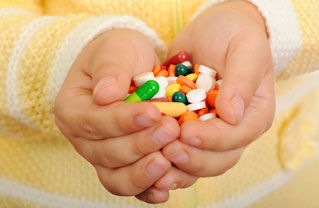

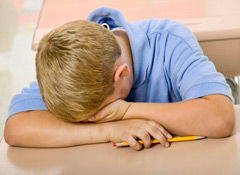
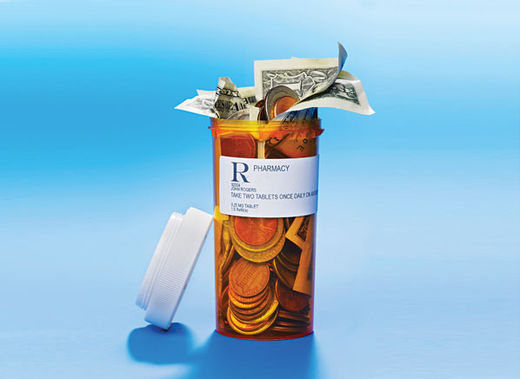
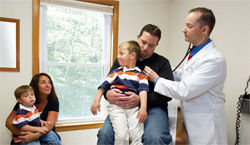
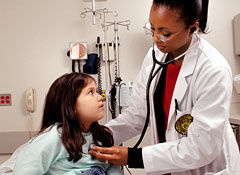



Comment: To learn more about The Over-Prescribing of Psychoactive Drugs to Children: A Scourge of Our Times read the following articles:
More Children on Drugs Than Ever: Chronic Prescriptions Increase Dramatically
What is Happening in Our Society That We Need to Drug Five-Year-Old Children?
Child Abuse! More Toddlers, Young Children Given Antipsychotics
ADHD drugs prescribed to 'all academically struggling' children
Use of hyperactivity drugs soars
Ritalin Gone Wrong